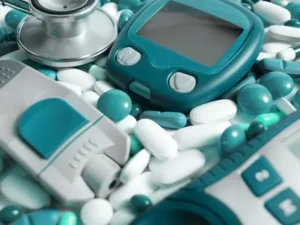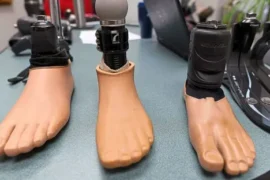Introduction
Polymers have become an integral component in the medical device industry, revolutionizing how devices are designed, manufactured, and utilized in various healthcare settings. The versatility, cost-effectiveness, and adaptability of polymers have made them the material of choice for numerous medical applications, ranging from disposable syringes to complex prosthetic devices.
With the global healthcare industry constantly evolving, the demand for advanced and innovative medical devices is on the rise, pushing the boundaries of what polymers can achieve.
This post will provide an in-depth analysis of the market size, share trends, and growth projections for polymers in medical devices from 2024 to 2030. We will explore the driving factors behind market expansion, technological advancements, and the key players that are shaping this dynamic sector.
By understanding the role of polymers in medical devices and analyzing the market trends, stakeholders can better anticipate future developments and capitalize on emerging opportunities.

Market Overview
The Role of Polymers in Medical Devices
Polymers play a critical role in the manufacturing of medical devices due to their unique properties, including biocompatibility, flexibility, and durability. These materials are used in a wide range of applications, from simple devices like catheters and surgical gloves to more complex products such as artificial joints and heart valves.
The ability of polymers to be easily molded into various shapes and their compatibility with human tissues make them indispensable in the medical field.
Over the years, advancements in polymer science have led to the development of specialized polymers tailored for specific medical applications. For instance, the introduction of biodegradable polymers has revolutionized drug delivery systems, allowing for the controlled release of therapeutic agents within the body.
Similarly, high-performance polymers like polyether ether ketone (PEEK) are increasingly used in orthopedic implants due to their strength and resistance to wear.
Market Size and Share Analysis
The market for polymers in medical devices is poised for significant growth between 2024 and 2030. In 2023, the market was valued at approximately $XX billion, and it is projected to reach $XX billion by 2030, growing at a compound annual growth rate (CAGR) of X%.
This growth is driven by several factors, including the rising demand for minimally invasive surgical procedures, the increasing prevalence of chronic diseases, and the aging global population.
Polymers in medical devices are particularly prevalent in sectors such as cardiovascular, orthopedic, and dental applications. The cardiovascular segment is expected to witness substantial growth, driven by the increasing incidence of heart diseases and the growing demand for stents, catheters, and other polymer-based devices.
Similarly, the orthopedic segment is set to expand, fueled by the rising number of joint replacement surgeries and the demand for lightweight, durable implant materials.
Key Market Trends
Several key trends are shaping the market for polymers in medical devices:
- Biodegradable Polymers: There is a growing preference for biodegradable polymers in medical devices, particularly in drug delivery systems and temporary implants. These materials reduce the need for secondary surgeries to remove devices, enhancing patient comfort and outcomes.
- 3D Printing: The adoption of 3D printing technology in the medical device industry is revolutionizing the production of polymer-based devices. 3D printing allows for the customization of devices to meet specific patient needs, leading to better clinical outcomes.
- Regulatory Landscape: The regulatory environment for medical devices is becoming increasingly stringent, with a focus on safety and biocompatibility. This is driving innovation in polymer formulations to meet these regulatory requirements.
- Sustainability: There is an increasing emphasis on the sustainability of medical devices, leading to the development of eco-friendly polymers. This trend is expected to grow as healthcare providers and manufacturers prioritize environmental responsibility.
Growth Drivers and Challenges
Factors Driving Market Growth
The market for polymers in medical devices is being driven by several key factors:
- Technological Advancements: Continuous advancements in polymer science and manufacturing techniques are enabling the production of high-performance medical devices. Innovations such as bioresorbable polymers and smart polymers with responsive properties are expanding the potential applications of these materials.
- Aging Population: The global aging population is increasing the demand for medical devices, particularly in orthopedic and cardiovascular applications. Polymers, due to their biocompatibility and durability, are ideal materials for the production of implants and prosthetics used in elderly patients.
- Rising Prevalence of Chronic Diseases: The growing incidence of chronic conditions such as diabetes, cardiovascular diseases, and cancer is driving the demand for advanced medical devices. Polymers are critical in the development of devices used for the management and treatment of these conditions.
- Minimally Invasive Procedures: The trend towards minimally invasive surgical procedures is boosting the demand for polymer-based devices. These procedures often require flexible, lightweight materials that can be easily maneuvered within the body, making polymers an ideal choice.
Challenges and Restraints
Despite the promising growth prospects, the market for polymers in medical devices faces several challenges:
- Regulatory Compliance: The stringent regulatory requirements for medical devices pose a significant challenge for manufacturers. Ensuring that polymer-based devices meet safety and biocompatibility standards requires extensive testing and validation, which can be time-consuming and costly.
- Material Limitations: While polymers offer many advantages, they also have limitations, such as lower mechanical strength compared to metals. This restricts their use in certain applications where high strength and durability are critical.
- Price Sensitivity: The cost of high-performance polymers can be a barrier to their widespread adoption, particularly in cost-sensitive markets. Manufacturers need to balance the benefits of advanced polymers with the need to keep device costs affordable.
- Environmental Concerns: The environmental impact of synthetic polymers, particularly those that are non-biodegradable, is a growing concern. The industry is under pressure to develop sustainable alternatives that minimize environmental impact.
Competitive Landscape
Key Players and Market Position
The market for polymers in medical devices is highly competitive, with several key players dominating the industry. These companies are investing heavily in research and development to introduce innovative products and maintain their market position. Some of the leading players in the market include:
- BASF SE: A global leader in chemicals, BASF SE is actively involved in the production of high-performance polymers for medical devices. The company’s extensive product portfolio and focus on innovation make it a key player in this market.
- DuPont: DuPont is a major player in the polymer industry, offering a wide range of materials for medical applications. The company’s expertise in polymer science and its commitment to sustainability are driving its growth in the medical device market.
- Covestro AG: Known for its high-performance polymers, Covestro AG is a significant player in the medical device industry. The company’s materials are widely used in various applications, from wound care products to surgical instruments.
- DSM Biomedical: A subsidiary of Royal DSM, DSM Biomedical specializes in the development of advanced biomaterials for medical devices. The company’s focus on biocompatibility and innovation has made it a leader in this space.
Strategic Initiatives
To maintain their competitive edge, key players in the market are adopting several strategic initiatives, including:
- Partnerships and Collaborations: Companies are forming strategic partnerships with healthcare providers, research institutions, and other stakeholders to drive innovation and expand their market reach.
- Product Development: Continuous investment in research and development is enabling companies to introduce new and improved polymer-based medical devices. This is helping them to meet the evolving needs of the healthcare industry.
- Geographic Expansion: Companies are expanding their presence in emerging markets, where the demand for medical devices is growing rapidly. This is helping them to tap into new revenue streams and increase their market share.
- Sustainability Initiatives: In response to growing environmental concerns, companies are focusing on the development of sustainable polymers and eco-friendly manufacturing processes. This is helping them to align with global sustainability goals and enhance their brand reputation.
Future Outlook
Growth Projections
The market for polymers in medical devices is expected to continue its robust growth trajectory from 2024 to 2030. Several factors will contribute to this growth, including:
- Technological Advancements: Ongoing innovations in polymer science will lead to the development of new materials with enhanced properties, further expanding the range of applications for polymers in medical devices.
- Healthcare Demand: The increasing demand for healthcare services, driven by the aging population and the rise in chronic diseases, will boost the need for advanced medical devices. Polymers, with their versatility and adaptability, will play a crucial role in meeting this demand.
- Regulatory Support: As regulatory bodies continue to emphasize the importance of safety and biocompatibility in medical devices, the demand for high-quality polymers will increase. Manufacturers that can meet these stringent requirements will have a competitive advantage.
- Emerging Markets: The rapid growth of healthcare infrastructure in emerging markets presents significant opportunities for the expansion of the polymers in medical devices market. Companies that can effectively navigate these markets will benefit from increased sales and market share.
Challenges and Opportunities
While the market outlook is positive, several challenges could impact future growth:
- Regulatory Hurdles: Navigating the complex regulatory landscape for medical devices will remain a challenge for manufacturers. Companies will need to invest in compliance and quality assurance to ensure their products meet global standards.
- Material Innovation: The development of new polymers with enhanced properties will be crucial for maintaining market growth. Companies that can innovate and offer superior materials will be well-positioned to capitalize on emerging opportunities.
- Sustainability: As the healthcare industry increasingly focuses on sustainability, there will be a growing demand for eco-friendly polymers. Manufacturers that can offer sustainable alternatives will have a competitive edge in the market.
- Market Competition: The market for polymers in medical devices is becoming increasingly competitive, with new players entering the space. Companies will need to differentiate themselves through innovation, quality, and customer service to maintain their market position.
Conclusion
The market for polymers in medical devices is set for significant growth between 2024 and 2030, driven by technological advancements, increasing healthcare demand, and the expansion of emerging markets.
Polymers have become essential materials in the medical device industry, offering unparalleled versatility, biocompatibility, and adaptability. As the market continues to evolve, companies that can innovate and meet regulatory requirements will be well-positioned to capitalize on the opportunities ahead.
Readers are encouraged to leave their comments and thoughts on the future of polymers in medical devices. What trends do you think will shape the market in the coming years? How can manufacturers address the challenges they face? Share your insights below





